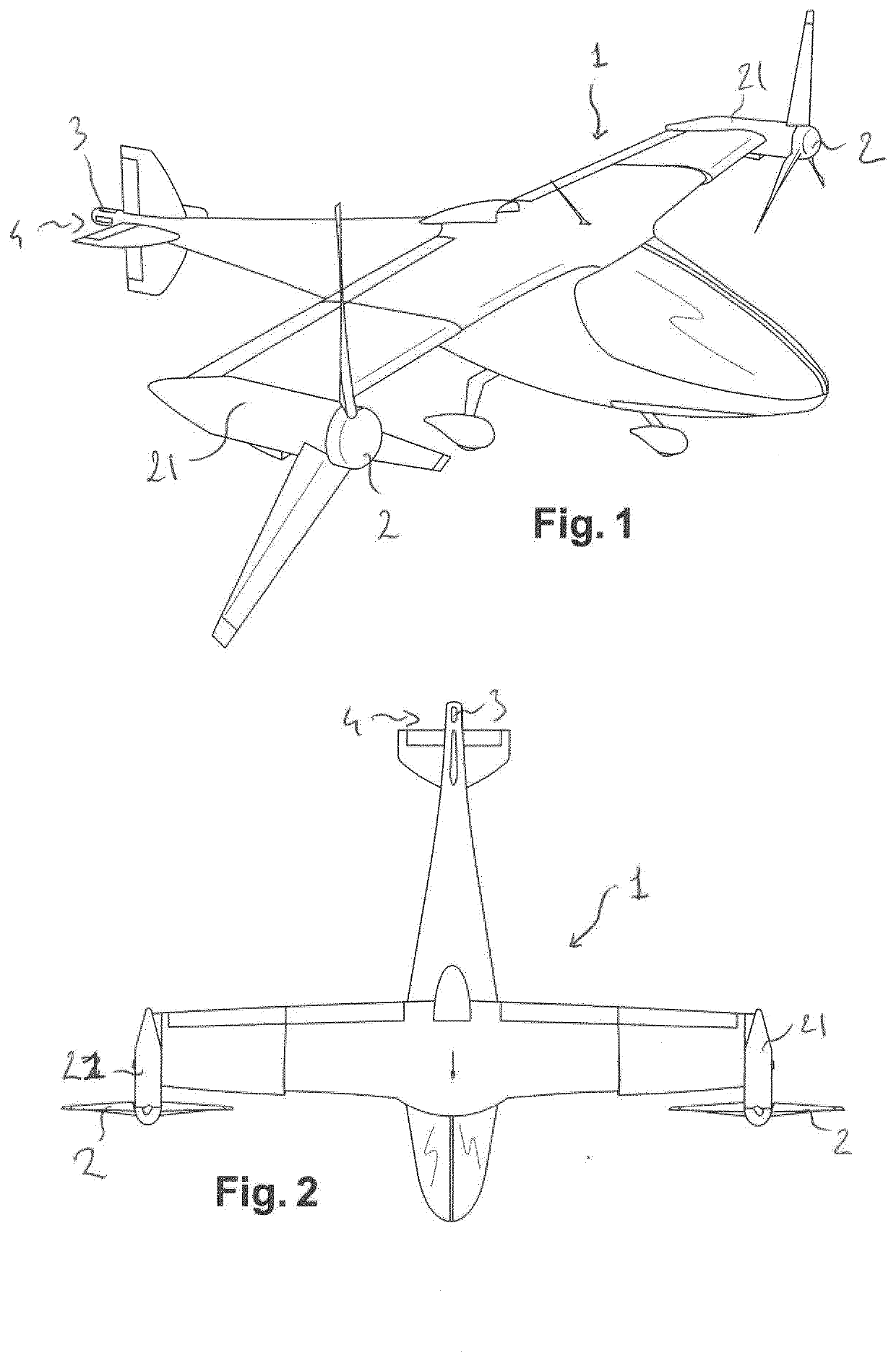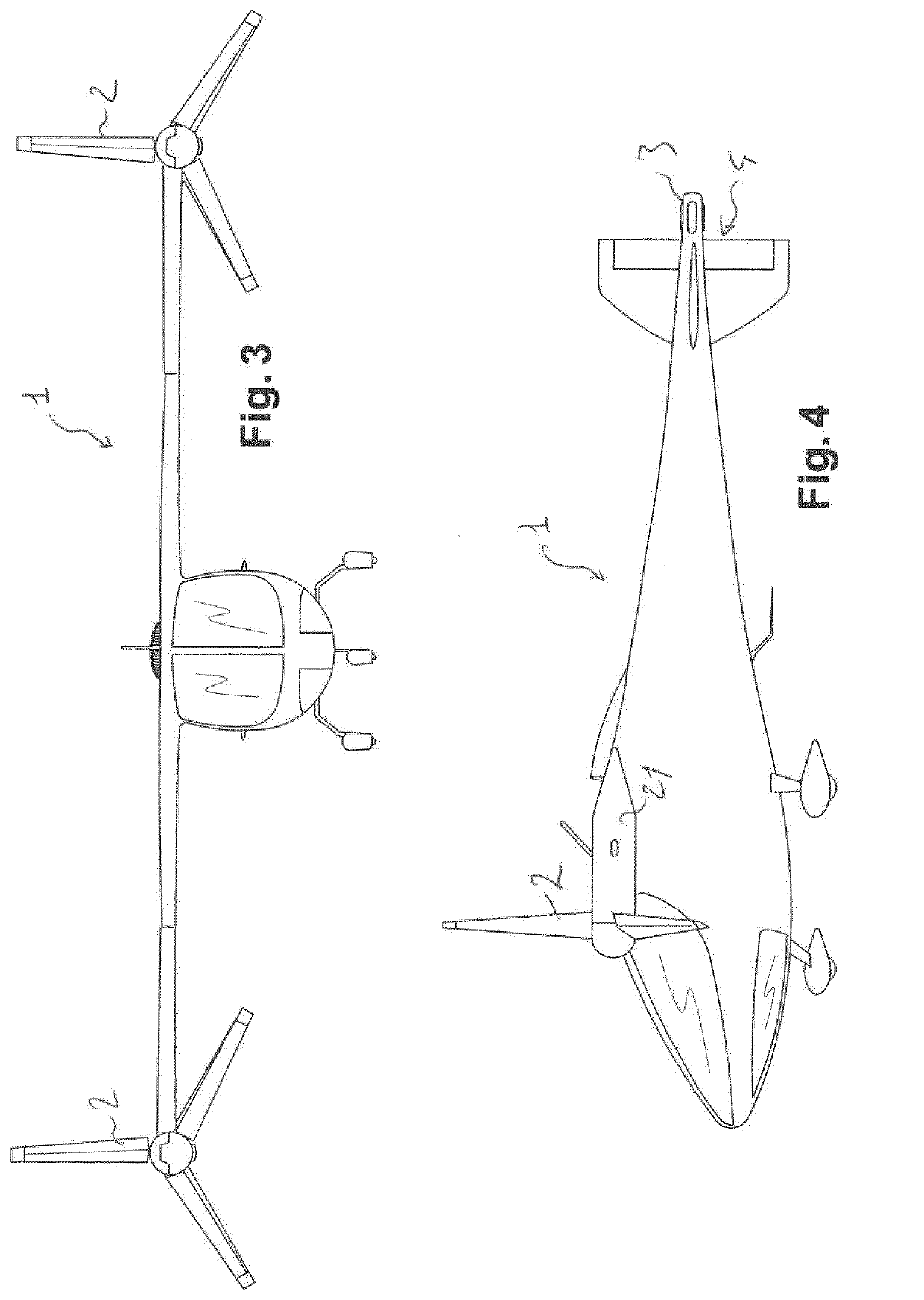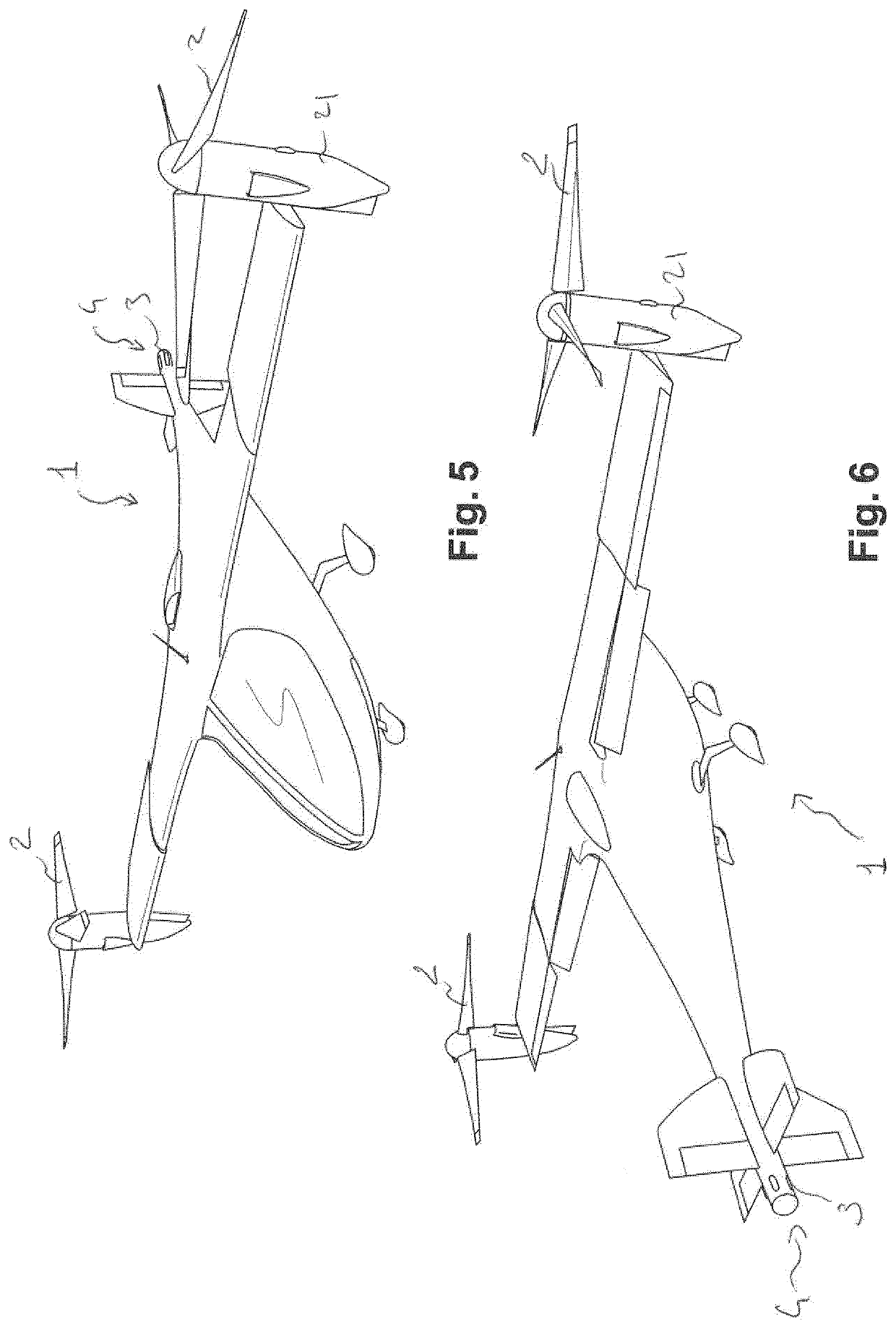Electrical vertical take-off and landing aircraft
a vertical take-off and landing aircraft technology, applied in the field of airborne and flying vehicles, can solve the problems of compromising safety in built-up areas, unable to compete with similar payload-class, propeller-driven aircraft in speed and range, and current rotary-wing vtols, except for very advanced tilt rotor aircraft, to achieve the effect of simple, reliable and cost-effective design, and simple and cost-effective design
- Summary
- Abstract
- Description
- Claims
- Application Information
AI Technical Summary
Benefits of technology
Problems solved by technology
Method used
Image
Examples
Embodiment Construction
[0042]The present invention pertains to an electrically driven VTOL tilt-propeller aircraft 1, which may be described and referred to in the following description under the acronym E-VTOL.
[0043]The E-VTOL aircraft 1 of the invention, an example of which is represented in the appended figures, exploits advanced electric propulsion technology together with highly efficient, autonomously piloted Vertical Take-Off and Landing (VTOL) systems with pilot override. The E-VTOL aircraft 1 of the invention has been developed by the inventors with the aim of bringing the VTOL capable aircraft to a completely new status and commercial relevance and viability thanks to a tilt-propeller design relying on electrical power as energy for driving tiltable propeller units. The E-VTOL aircraft 1 of the invention accordingly offers a safe, legal, and practical flying vehicle to operate within populated, built-up localities, and to achieve speeds and ranges competitive with current fixed wing, propeller-d...
PUM
 Login to View More
Login to View More Abstract
Description
Claims
Application Information
 Login to View More
Login to View More - R&D
- Intellectual Property
- Life Sciences
- Materials
- Tech Scout
- Unparalleled Data Quality
- Higher Quality Content
- 60% Fewer Hallucinations
Browse by: Latest US Patents, China's latest patents, Technical Efficacy Thesaurus, Application Domain, Technology Topic, Popular Technical Reports.
© 2025 PatSnap. All rights reserved.Legal|Privacy policy|Modern Slavery Act Transparency Statement|Sitemap|About US| Contact US: help@patsnap.com



